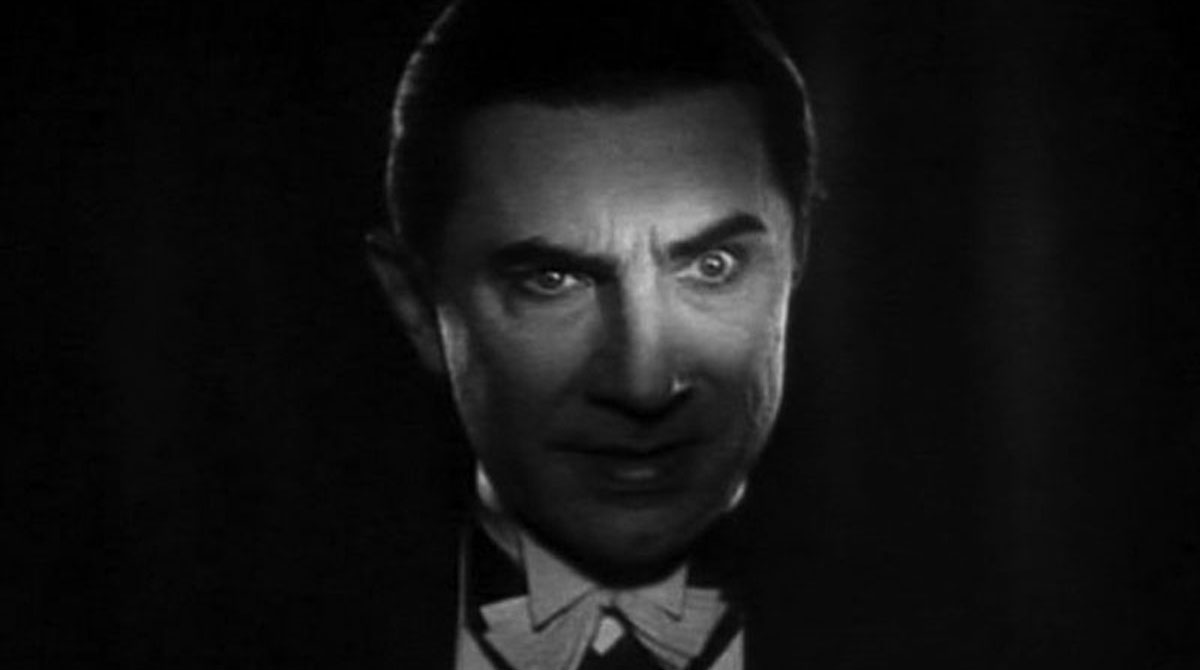I Mistrust My Own Judgement: Dracula (Monster Memories)
Tod Browning’s 1931 adaptation of Dracula is the granddaddy of them all, the film the launched the Classic Monster films of Universal. The Universal cinematic universe if you will.
I try not to judge these old films by modern standards or how a film has come to be perceived over the decades. I attempt, as much as possible, to put myself in the mind-set of the time period it was released; basically to see it on its own merits and not its legacy. But sometimes this is simply not possible. Sometimes a film, a portrayal or a style has become so iconic that it simply can’t be watched without the immense weight of that history hanging over it. Dracula fits that category quite well.
Lugosi’s vampire has become the standard by which all others are judged. Every portrayal of a vampire is either homage or a reaction against his. And the endless parodies, from comedy skits to cereal boxes, his portrayal has become greater than the role itself.
“Listen to them. Children of the night. What music they make.”
– Count Dracula
What I Remember…
Certainly as a child, before I had even seen the film, I knew who Dracula “was”.
He dressed in an ancient tuxedo with pitch black hair slicked back with a widow’s peak. His fingers cocked and extended with wide, piercing eyes, “I vant to drink your blood,” he would say in an accent slow and thick and foreign. I can’t remember being surprised or scared by Dracula the first time I saw it. Instead I remember it simply living up to my expectations. I knew the way it was supposed to be, and the film delivered on all counts (no pun intended). When I watched Dracula as a kid he had already become a caricature. Bela Lugosi’s vampire had stopped being scary and had simply become a punchline.
The film and Lugosi’s portrayal is much more nuanced than that, but sadly this was lost on me as a child.
What It’s About…
Deep in the Carpathian mountains of Transylvania the reclusive Count Dracula has decided to move house to England where all the happening horror was going on in those days. Dracula employs Reinfield, a solicitor, to handle his travel plans and turns him insane just for giggles.
When he arrives in London Dracula meets Mina, her fiancé John Harker and their close friend Lucy Weston. That night Dracula visits Lucy and feats on her blood. She “dies” a few days later.
Meanwhile Professor Van Helsing has been examining Renfield and has come to think there might be something up with that Dracula fellow.
Dracula then visits Mina and begins the process to turn her into a vampire. Harker and Van Helsing confront the Count and find that he is indeed a vampire and decide that something should be done about that. Later Mina and Harker have a talk on the terrace and she confesses how much she loves nights and frogs (but c’mon, who doesn’t?) and that their love is over.
Harker, undeterred, sets off with Van Helsing to kill the vampire while he sleeps. This turns out to a be surprisingly easy task. With Dracula dead Mina returns to normal and all is well. The End.
What I Think Now…
This was the film that really cemented the lore of vampires in film. Now, there had been vampire films before Dracula; including the classic Nosferatu in 1922 to which Dracula owes more than a little debt. The hands creeping from coffins, the deep, harshly thrown shadows across gothic walls, the glimpses of rats and spiders skulking from cobwebbed corners, these things are all in the German Expressionism style exemplified in F.M. Murnau’s silent masterpiece. What was truly new was sound. But this is a film that straddles two eras – the silent and the sound. And director Tod Browning uses sound in sparse but specific ways.
Large swaths of the film have no sound at all. No dialogue, no music, only punctuated with sound effects in the background. The thump of footsteps, the creak of a door, the howl of a distant wolf – and when the when the characters do talk the lines are deliberate and sharp. The actors use long dramatic motions reminiscent of the silent era; exaggerated melodramatic flourishes in both gesture and tone.
And no one did this better than Bela Lugosi.
The story goes that he spoke only a few words of English when the film was made and was speaking the lines phonetically. This is of course one of those Hollywood tales that has grown into legend. Lugosi had been living and working in the US for over a decade by the time Dracula was made. But the way he delivers the lines are distinctly…well…foreign. But he used sound to his advantage. His uses his strong accent in long, drawn out sentences and broken, almost painful English. It is as if it was spoken by someone who has learned the language but never had the opportunity to practice it.
And his physicality was just as pronounced. Elbows cocked at strange angles and fingers bent and crooked. He crept and stalked animal-like across the screen. It is one of the most iconic performances in cinema. And one that of course, after more than 80 years, has fallen into parody of itself. I suppose one could be forgiven for thinking this is all a bit silly. This performance has been lampooned by everyone from Leslie Neilson to Count Chocula. But that does a great disservice to what Lugosi was doing here. He is very creepy and off-putting. He is both smooth and suave but at the same time he is unnatural. He both attracts you and repulses you simultaneously. It is truly an iconic performance.
And speaking of which there is Renfield played by Dwight Frye. He is somewhat overshadowed by Lugosi but the role is just as iconic. Wildly over-the-top in grand silent-era style Frye’s portrayal is exuberant in its madness. Wide-eyed and insane, laughing in machine-gun bursts, his voice and movement were not quite right, not quite real. This is the template for the “mad assistant” for years to come.
But more than the iconic performances and stylized visuals there is real horror here. And the horror comes from the violation of will and body.
Dracula as a vampire takes away the victim’s ability to decide or defend themselves and then takes the victim’s body while leaving the impression that this is what the victim wanted. This is a deeply disturbing implication. There is eroticism to the vampire attack, but the attacks are – let’s call it what it is – a stylized rape. They take place in bedrooms and back alleys. The vampire takes you physically and emotionally, you lose your soul and become living but dead at the same time. These implications are never spoken aloud, only hinted at; as when Dracula enters Lucy’s bedroom and creeps close slowly, his face so painfully close to hers sleeping. Or when Renfeild crawls like a prowling animal toward the unconscious maid a look of manic hunger in his wide eyes. There is mortal and physical menace; but even worse there is mental and psychological pain as well. It is an unspeakable crime the vampire commits. It is a violation.
Watching it now, putting myself in the moment and distancing myself from the baggage of its reputation, imagining myself walking into a theater in 1931. The lights dimmed and the shadows flickered across the screen. The deep silence punctuated by rattles and howls. I can experience what most felt when they first saw this film. It is creepy and it is weird and wonderful. It touches on fears we don’t talk about as it entertains and leaves you with a lingering impression that something isn’t quite right.
That’s what a good horror movie should do.
Original Trailer
Monster Memories is an ongoing feature that looks at classic horror films and TV from the perspective of how I remember them as a child and comparing them to how I see them today as an adult. It is not meant to be a detailed critique of the film/show but rather a nostalgic look back on a genre I love.












Likhon chowdhury says:
Conor says:
Andy Garcia says: